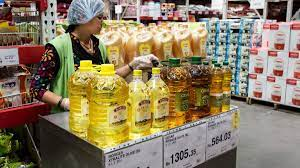CURRENT AFFAIRS
Get the most updated and recent current affair content on Padhaikaro.com
Edible oil prices
- IAS NEXT, Lucknow
- 10, Mar 2022

Reference News:-
Due to stringent measures by the government, prices of edible oil have been control for the last two years, despite the Covid situation.
- However, the war in Ukraine has driven the prices of many commodities northwards including the edible oil prices.
What’s the issue?
Most of the sunflower oil supplies to the country was coming from Ukraine, while the domestic production accounts for less than a quarter of the demand. With Ukraine being war-hit, the supplies have completely stopped.
- As sunflower oil supplies dwindle, consumers are invariably moving to groundnut and palm oils, driving up their prices as well.
Previously, What led to increase in oil prices previously?
- Global commodity prices were extremely high. COVID-19 is a major factor, disrupting supply chains, closing down industries.
- There was insufficient labour in the oil production industry in many countries.
- Excessive buying of edible oil by China.
- Many major oil producers were aggressively pursuing biofuel policies and diverting their edible oil crops for that purpose.
- Governmental taxes and duties also make up a major chunk of the retail price of edible oils in India.
India’s Dependence on Edible Oil:
- India is the world’s biggest vegetable oil importer.
- India imports about 60% of its edible oil needs, leaving the country’s retail prices vulnerable to international pressures.
- It imports palm oil from Indonesia and Malaysia, soyoil from Brazil and Argentina, and sunflower oil, mainly from Russia and Ukraine.
Facts about Edible Oils:
- Primary sources of Edible oil (Soybean, Rapeseed & Mustard, Groundnut, Sunflower, Safflower & Niger) and secondary sources of Edible Oil (Oil palm, Coconut, Rice Bran, Cotton seeds & Tree Borne Oilseeds).
- In India major challenges in oilseed production is
- Growing in largely rain-fed conditions (around 70% area),
- high seed cost (Groundnut and Soybean),
- small holding with limited resources,
- low seed replacement rate and low productivity.